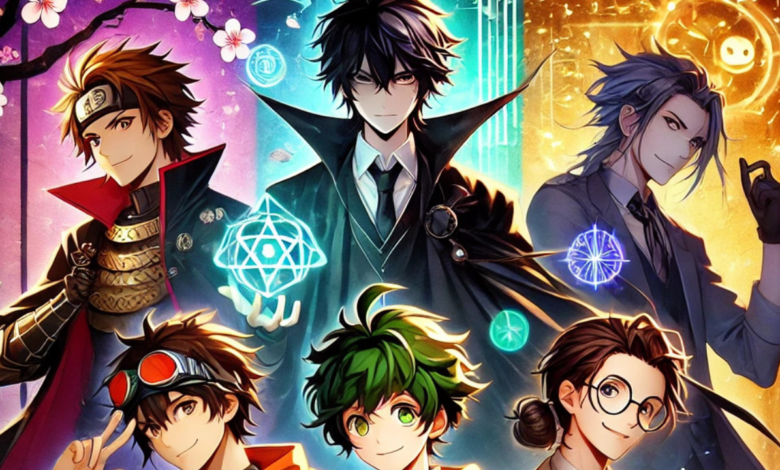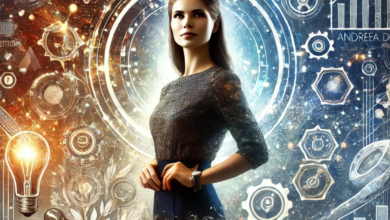Exploring the Allure of Anime Boys: Characters, Archetypes, and Their Impact on Fans

1. Introduction
Anime has become a global phenomenon, captivating millions of fans with its vibrant storytelling, imaginative worlds, and compelling characters. Among these characters, anime boys hold a unique place, resonating deeply with audiences of all ages and backgrounds. Their diverse personalities, intricate designs, and emotional depth have made them cultural icons and an integral part of the anime experience.
What is it about anime boys that captivates fans worldwide? From their heroic feats to their relatable struggles, anime boys embody a range of qualities that strike a chord with viewers. This article dives deep into the multifaceted appeal of anime boys, exploring their archetypes, cultural impact, and the emotional connections they inspire.
2. The Diverse Archetypes of Anime Boys
2.1 The Charming Protagonist
Charming protagonists are the heart of many anime series. They’re defined by their determination, charisma, and an unwavering sense of justice. Characters like Naruto Uzumaki from Naruto and Tanjiro Kamado from Demon Slayer inspire viewers with their resilience and ability to overcome insurmountable odds. Their relatable journeys, filled with both triumphs and failures, make them symbols of hope and perseverance.
2.2 The Mysterious Loner
Mysterious loners are often enigmatic, reserved, and emotionally complex. Levi Ackerman from Attack on Titan and Sasuke Uchiha from Naruto exemplify this archetype. Their stoic demeanor masks deep backstories, making them intriguing and multi-dimensional. Fans are drawn to their aura of mystery, which adds depth to the narrative and keeps audiences invested in their arcs.
2.3 The Lovable Goofball
Anime’s lovable goofballs bring humor and heart to the story. Characters like Monkey D. Luffy from One Piece and Gintoki Sakata from Gintama are known for their lighthearted antics and boundless optimism. Despite their comedic tendencies, these characters often demonstrate profound loyalty and courage, endearing them to fans who appreciate their balance of humor and heroism.
2.4 The Intellectual Genius
The intellectual genius archetype showcases characters who rely on strategy and intelligence to achieve their goals. Light Yagami from Death Note and Shikamaru Nara from Naruto are prime examples. Their brilliance and tactical thinking captivate audiences, while their moral dilemmas and challenges add complexity to their roles, making them unforgettable figures in anime lore.
2.5 The Dark and Edgy Anti-Hero
Dark and edgy anti-heroes are morally ambiguous, often straddling the line between hero and villain. Lelouch Lamperouge from Code Geass and Itachi Uchiha from Naruto embody this archetype. Their tragic backstories and complex motivations evoke empathy, even as their actions raise ethical questions. These characters push the boundaries of conventional heroism, adding depth to anime storytelling.
3. The Artistic and Cultural Impact of Anime Boys

3.1 Character Design and Aesthetics
Anime boys are renowned for their visually striking designs. From unique hairstyles and eye-catching outfits to expressive facial features, these characters stand out as works of art. Their designs not only reflect their personalities but also set trends in fashion and art. Iconic characters like Kaname Kuran from Vampire Knight or Eren Yeager from Attack on Titan demonstrate how aesthetics play a crucial role in their appeal.
3.2 Influence on Fashion and Trends
The influence of anime boys extends beyond the screen, inspiring cosplay, fan art, and even mainstream fashion. Their distinct styles—whether it’s Gojō Satoru’s sleek outfit from Jujutsu Kaisen or L’s unconventional look from Death Note—have shaped trends worldwide. Fans’ desire to emulate their favorite characters fosters creativity and contributes to the global popularity of anime.
3.3 Cultural Symbolism and Representation
Anime boys often embody cultural values and societal themes. For instance, samurai-inspired characters like Kenshin Himura from Rurouni Kenshin highlight themes of honor and redemption. These characters serve as cultural ambassadors, introducing viewers to Japanese traditions and philosophies, while their universal qualities make them relatable to a global audience.
4. The Emotional Connection Between Fans and Anime Boys
4.1 Relatable Personality Traits
Anime boys often mirror real-life struggles, dreams, and emotions. Whether it’s dealing with loss, striving for self-improvement, or navigating relationships, these characters resonate with fans on a personal level. Characters like Deku from My Hero Academia inspire viewers with their determination to overcome insecurities and become heroes in their own right.
4.2 The Power of Storytelling
Well-crafted backstories and character arcs deepen the emotional connection between fans and anime boys. A character’s journey—be it Edward Elric’s quest for redemption in Fullmetal Alchemist or Tomoya Okazaki’s growth in Clannad—invites viewers to invest emotionally. Their struggles and triumphs evoke empathy and admiration, creating lasting bonds with the audience.
4.3 The Role of Anime Boys in Fandom
Anime boys are a cornerstone of fan culture. From fan art and fan fiction to online discussions, they inspire creativity and foster community. The “husbando” phenomenon, where fans develop deep affection for specific characters, highlights the profound impact of anime boys on fandom. These characters transcend their fictional origins to become integral parts of fans’ lives.
5. Conclusion
Anime boys are more than just fictional characters; they are cultural icons and sources of inspiration. Their diverse archetypes, compelling designs, and emotional depth captivate audiences and leave a lasting impression. From charming protagonists to dark anti-heroes, anime boys reflect universal themes and values, bridging cultural gaps and uniting fans worldwide. Their enduring appeal underscores their significance in the anime industry and beyond.
6. FAQs
What makes anime boys so appealing to fans?
Their diverse personalities, intricate designs, and relatable stories create a deep emotional connection with fans.
Which anime boy archetype is the most popular?
Popularity varies, but charming protagonists and mysterious loners are fan favorites for their heroic and enigmatic qualities.
Are anime boys designed to appeal to specific demographics?
Yes, their designs and personalities often target broad audiences, including young viewers and older fans.
How do anime boys differ from characters in Western animation?
Anime boys are often more nuanced, with complex backstories and emotional depth, compared to many Western animated characters.
Can anime boys influence real-life attitudes and behaviors?
Absolutely. Their resilience, determination, and moral lessons inspire fans to adopt similar traits in their own lives.
Why do anime boys often have such distinctive hairstyles and colors?
Distinctive features help characters stand out visually and symbolize their personalities or roles in the story.
You May Also Read: https://bestusalive.com/sites-like-fmovies/





